I was invited to quote for some work on the Tillingbourne stream at Abinger Hammer. It’s only just over ankle deep and a popular spot for kids and parents to catch water creatures with little nets. Unfortunately, people clambering in and out of the stream was eroding the banks.
To reduce the rate of bank erosion we installed some oak steps with a handrail to make access in and out the stream easier. Funding was provided by Abinger Parish Council and the Surrey Hills Access for All fund to enable easier access to nature as well as protect the National Landscape’s rich habitats and wildlife.
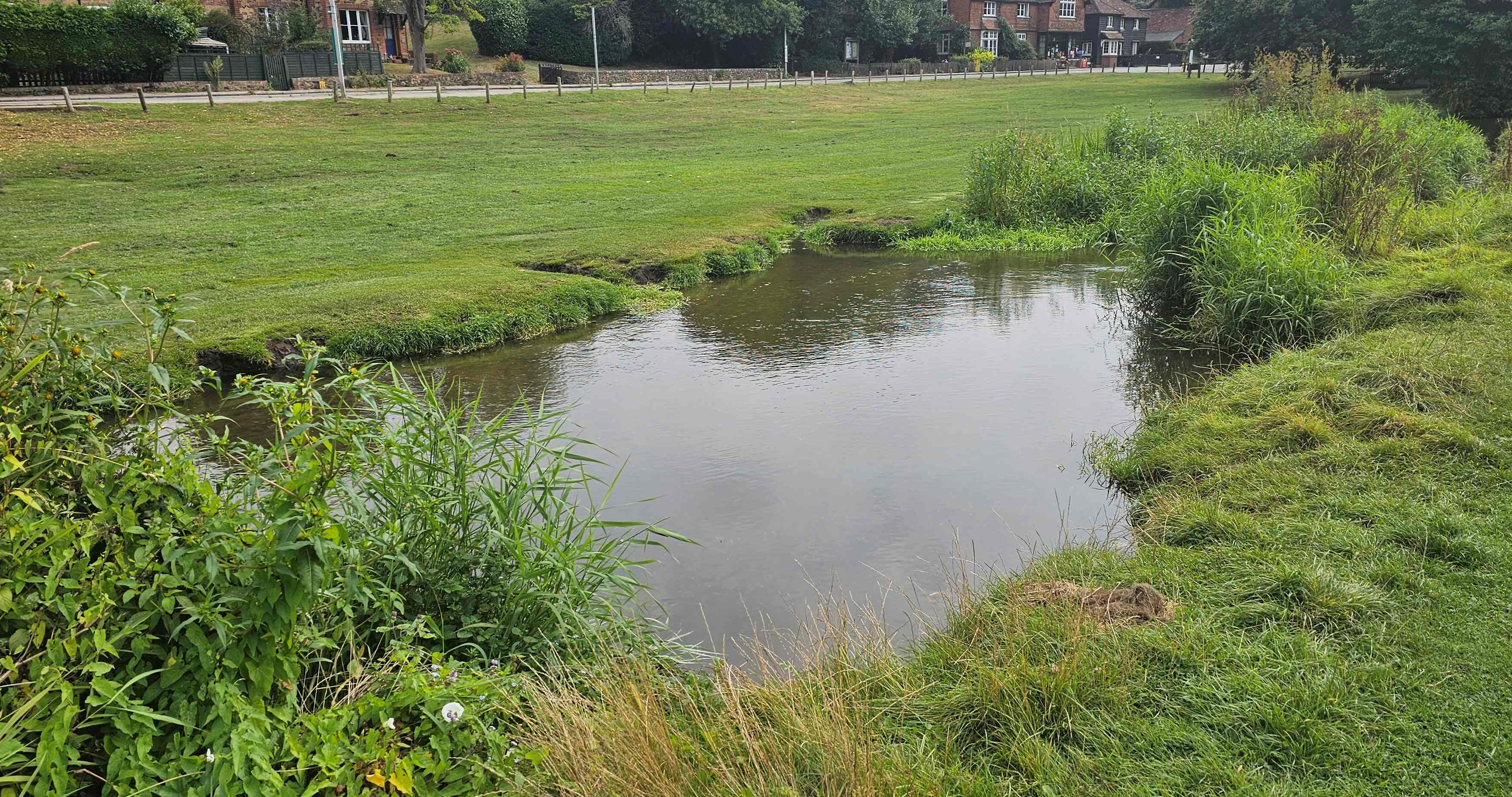
Eroded banks before work
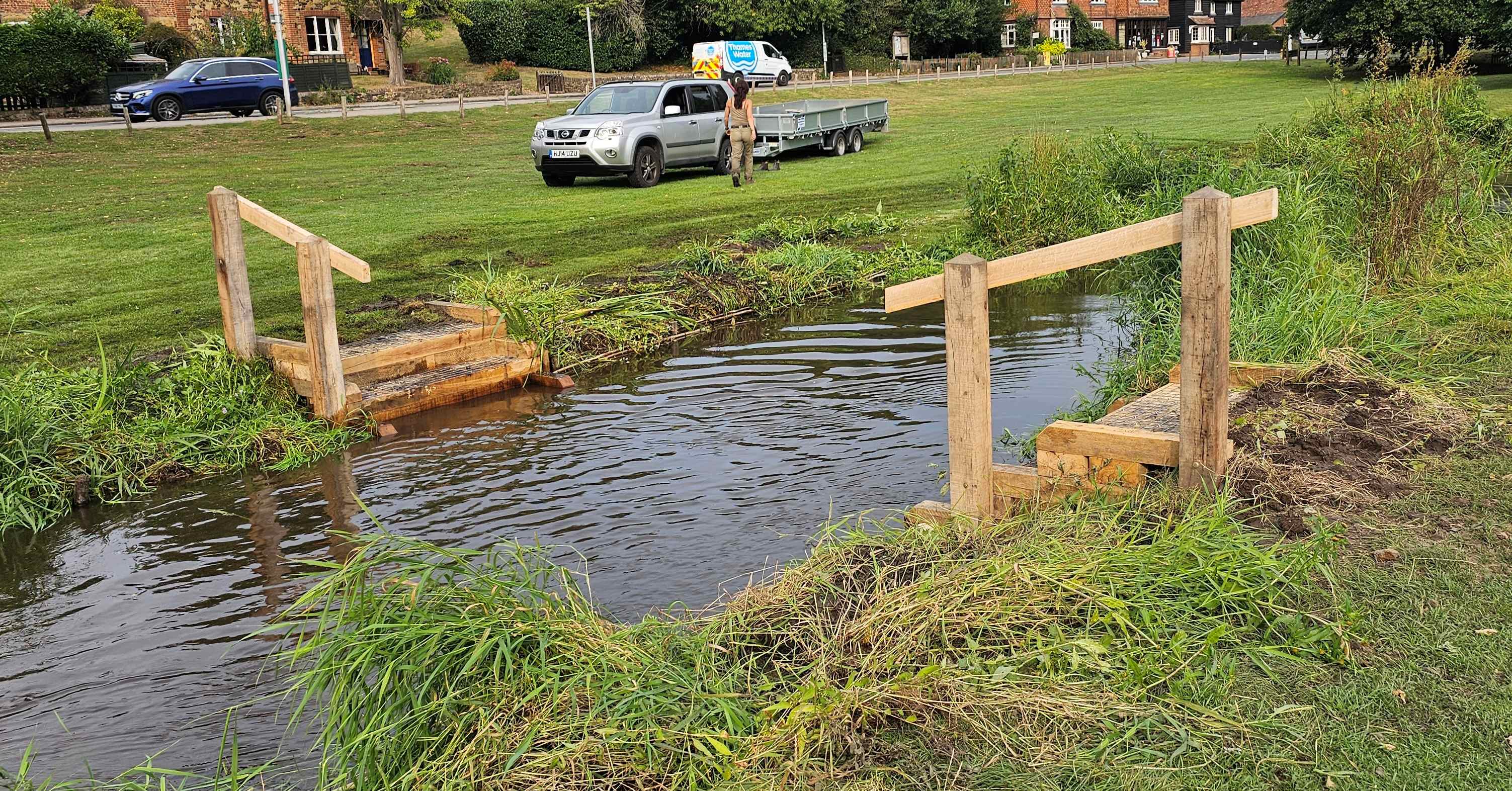
Steps and erosion repair after
We then shored-up the eroded banks with aquatic vegetation from elsewhere in the stream. To hold the vegetation in place we constructed a wattle fence made of sweet-chestnut stakes with hazel rods woven between them. Increasing the aquatic vegetation on previously barren banks will improve the habitat and increase biodiversity.
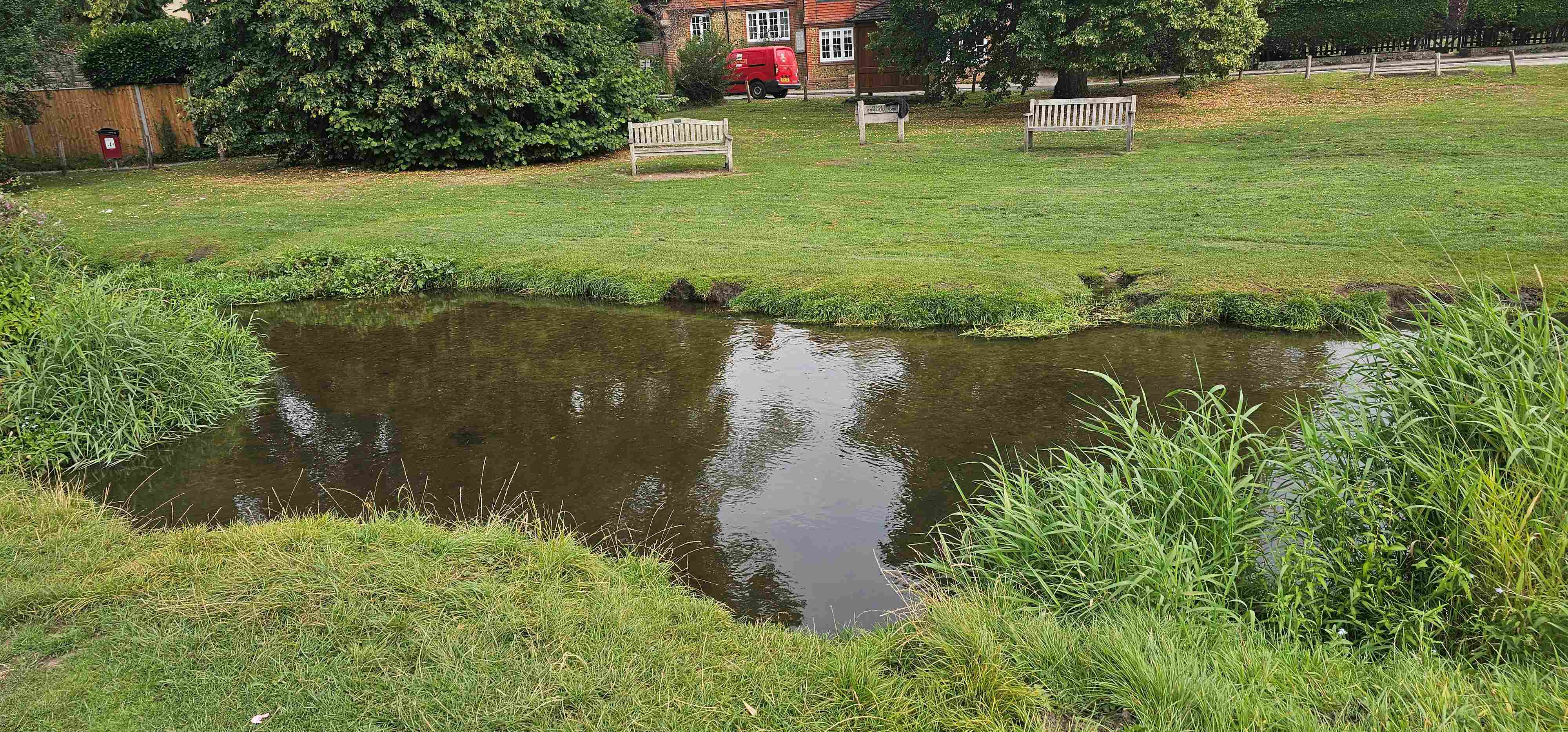
Before
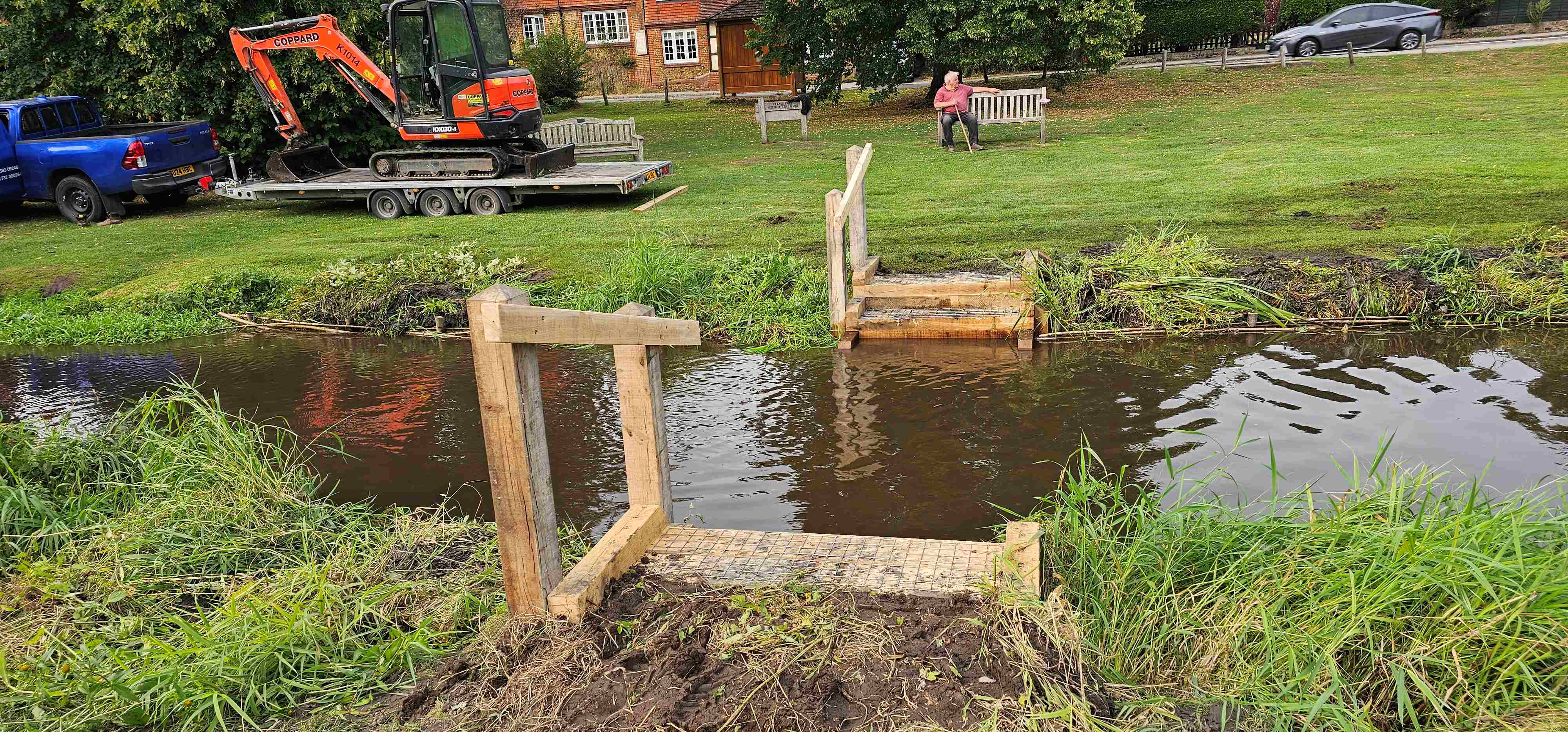
After
The local cricket ground were losing land to the erosion, so as well as being healthier for the biodiversity, there’s a community benefit.
The stream was getting quite choked in places. The re-location the aquatic vegetation is improving the flow. During the winter months this will reduce the likelihood of flooding.
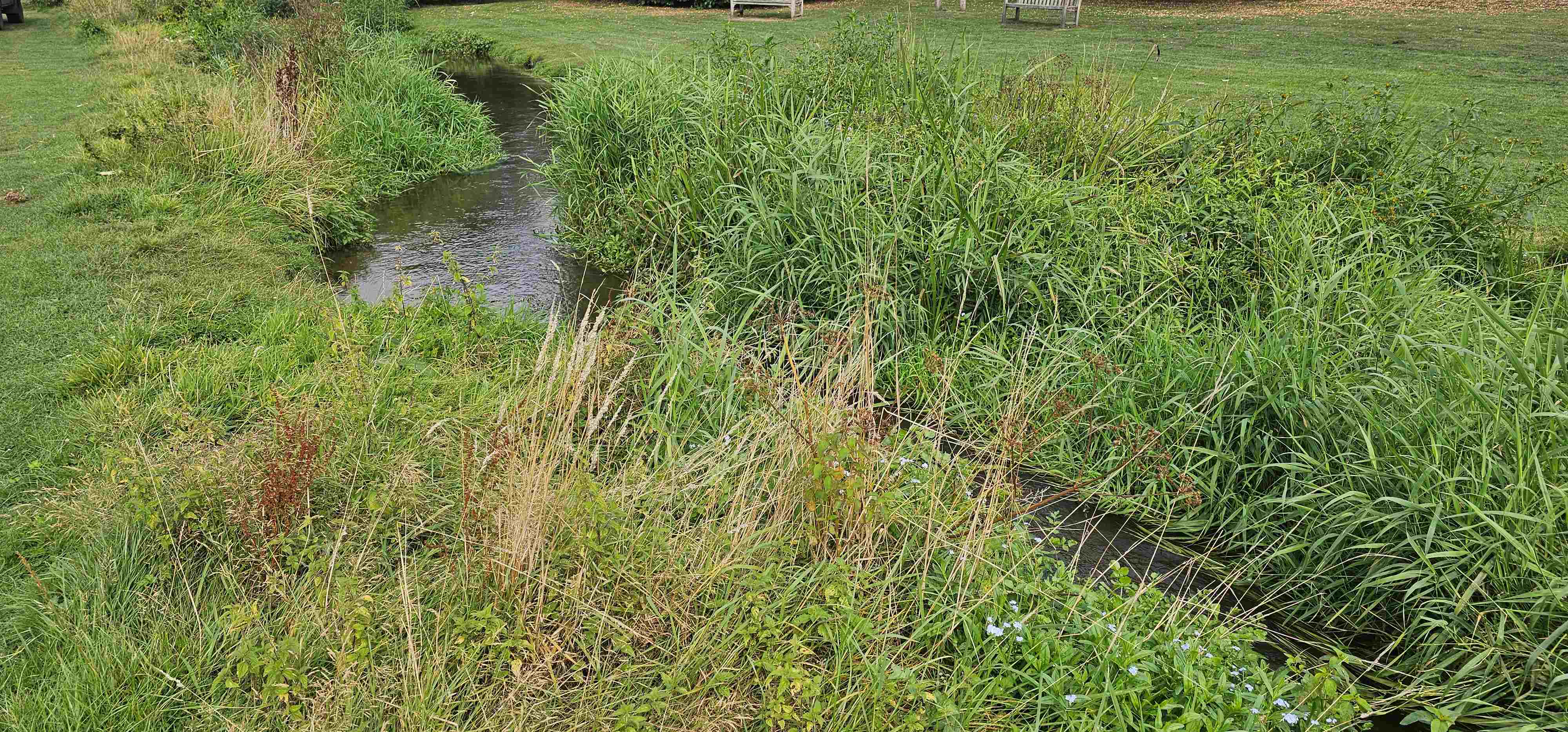
Before
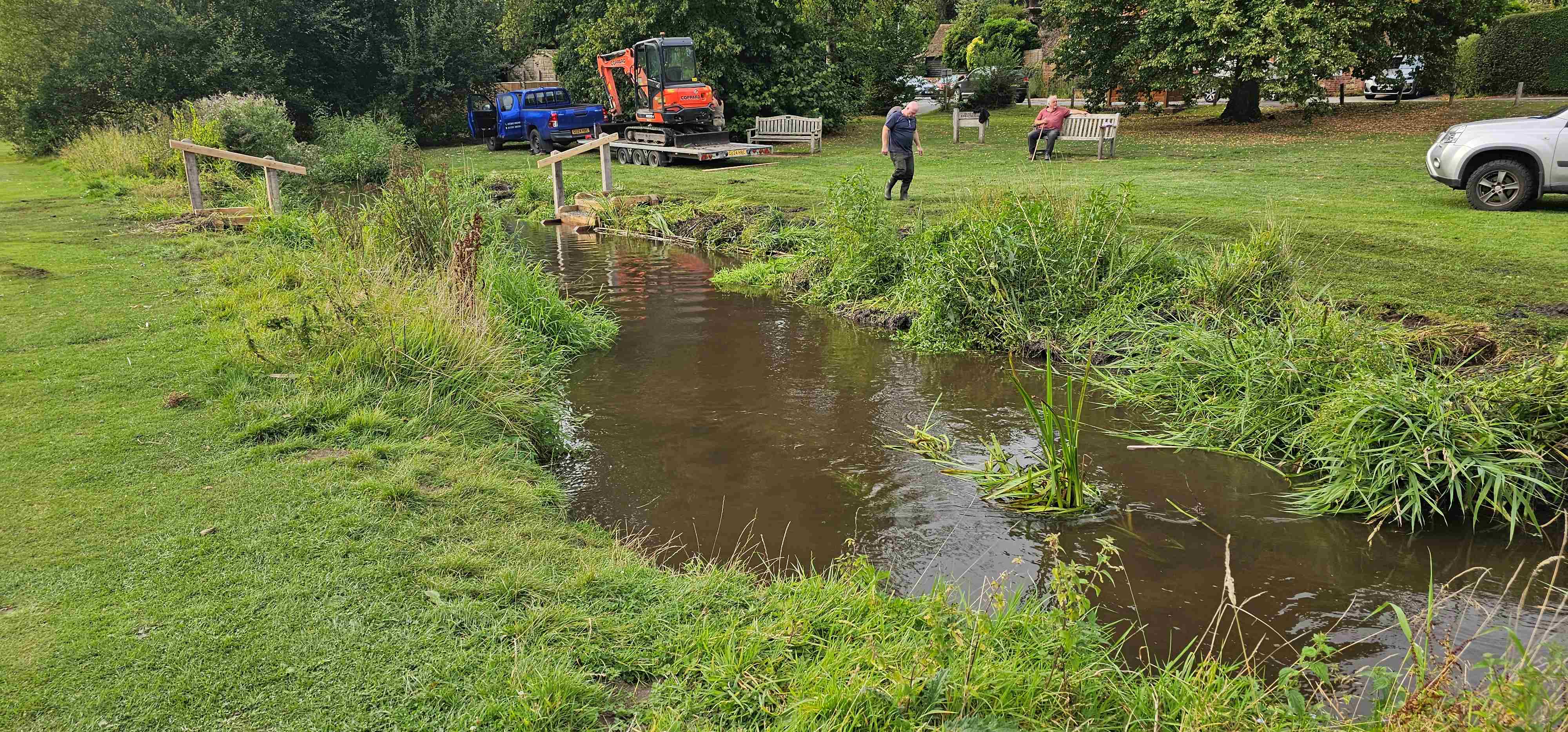
After
Whilst moving the aquatic vegetation we even spotted a brook lamprey. These are incredibly rare and a testament to the quality of the water in this stream.
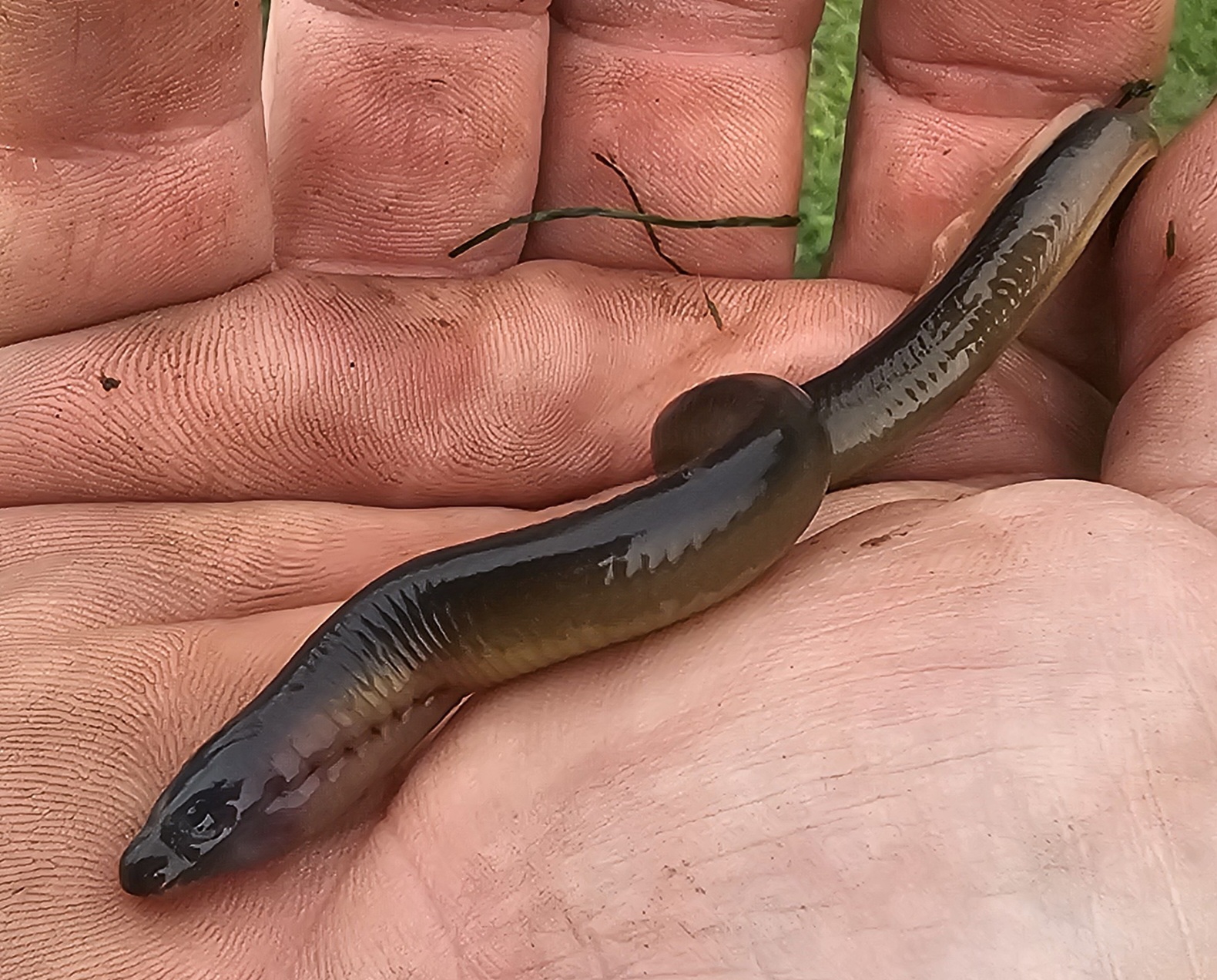
I love that my work may be an introduction to nature for so many people for years to come. Connecting new generations to the natural world is so important if we hope to conserve/enhance it.
Please leave a Reply